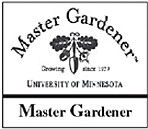September 8, 2004 at 6:43 p.m.
A cool, wet spring, followed by a cool wet summer has put almost all our fall crops way behind. Although we can’t do anything about the weather, there are still plenty of things to get done in the garden in September.
Despite our unpredictable climate (frost in August!!), we still have hundreds of perennials that thrive here. If you want to expand your flower beds, or are simply looking to replace those annuals with perennials, early autumn is a great time to plant. Besides, there is a bonus when the nurseries and garden centers have great sales on all their plant materials around this time of year.
Plan on planting perennials in early September––the sooner the better. You want at least three to four weeks of good growing weather before the onset of harsher weather. This gives the plants time to settle in and get established. Add about two inches of mulch around the plant right away. Then, when the soil begins to freeze in late October or early November, cut that foliage off close to the ground. Cover the plants with six or more inches of straw, leaves or other mulch.
Most people know that spring-flowering bulbs are planted in the fall. But unfortunately many bulbs aren’t planted early enough in the fall to develop enough of a root system to help them through the winter in good condition. Tulips are tough enough to put up with this, but daffodils, hyacinths, crocus, Siberian squill and other small bulbs will do better if they are planted earlier rather than later in the fall. A combination of rain, and periodic watering by the gardener until the soil freezes, will encourage them to form a strong root system. Later bulbs such as Asiatic and Oriental garden lily bulbs should be planted from mid September through October, for blooms next summer.
By September, you have had plenty of time to assess your evergreens, including the junipers, arborvitae and others that may have suffered winter injury last year. Now is a good time to fill in where there has been damage. Again, take advantage of those garden center and nursery sales.
If you are looking to add color and improve the appearance of your winter landscape (remember, all that white and mud brown!), consider adding spruce or fir trees for the future. Remember, in our area, Black Hills Spruce are a better choice and recommended, rather than Colorado or other Blue Spruce.
Don’t feel compelled to plant the largest specimens you can find. Smaller evergreens transplant more easily and generally grow faster after transplanting, catching up to those bigger ones quickly. And early autumn is a great time to plant young evergreens. They will have a chance to become established in their new location, because roots will remain active until the ground freezes. By mulching them with a couple of inches of mulch (pull it back from the trunk an inch) you can keep the soil from freezing as early as it would otherwise, which will allow you to continue watering a little longer.
Deciduous trees and shrubs (those that don’t stay green during winter) may be planted in September also. They can also be planted after they have gone dormant and have lost their leaves. The evergreens, who hang onto their leaves/needles, continue to lose moisture through their leaves/needles all winter, which is why it is very important to plant them earlier, and give their roots a chance to get established.
Now is the time to give yourself and your garden a fall color treat, by picking up mums from the garden centers, even the grocery store! Choose plants whose buds are just beginning to open, so you can continue to enjoy them for weeks. And look for containers of pansies, violas and Johnny-jump-ups. These are usually associated with spring, but lately many garden centers have realized they are quite happy in the fall, and can even tolerate light frosts, just like mums.
Don’t forget––the new 2005 Master Gardener calendars are available for $12 at the Extension Office in North Branch (located at the Green Acres Nursing Home). Each month is full of timely garden tips.They make great gifts!
+++++
There are three remote drop off sites for samples in the county: Mannions Greenhouse and Floral in Rush City, North Branch Floral and Federated Coop (Cenex) on Highway 8 in Chisago City. There will not be a Master Gardener on site, but these businesses have agreed to hold the samples for pickup.
There will be Master Gardeners on site to answer your questions Thursday evenings from 6-8 p.m. at the Chisago County Hazardous Waste facility in North Branch.
The Lindstrom Farmers Market is now open. There is a Master Gardener there from 8 a.m.-noon every Saturday.
+++++
Other ways to access information:
www.extension.umn.edu/county/chisago
Check out the “Hot Topics” box in the middle of the page for current Chisago County Master Gardener news and events. You can also click on “Ask a Master Gardener” next to the cute little flower on the right hand side of the page. Here you can search 1000s of answers from Master Gardeners around the state. If you don’t find your answer, you can submit a question online or search for University publications.
Bell Museum of Natural History
For information about snakes, skunks, raccoons or other wildlife around your yard, call the wildlife information line at (612) 624-1374 or www.bellmuseum.org.
Master Gardener voice mail: 651-237-3080
Leave a message and a Master Gardener will call you back within a couple of days.



Comments:
Commenting has been disabled for this item.